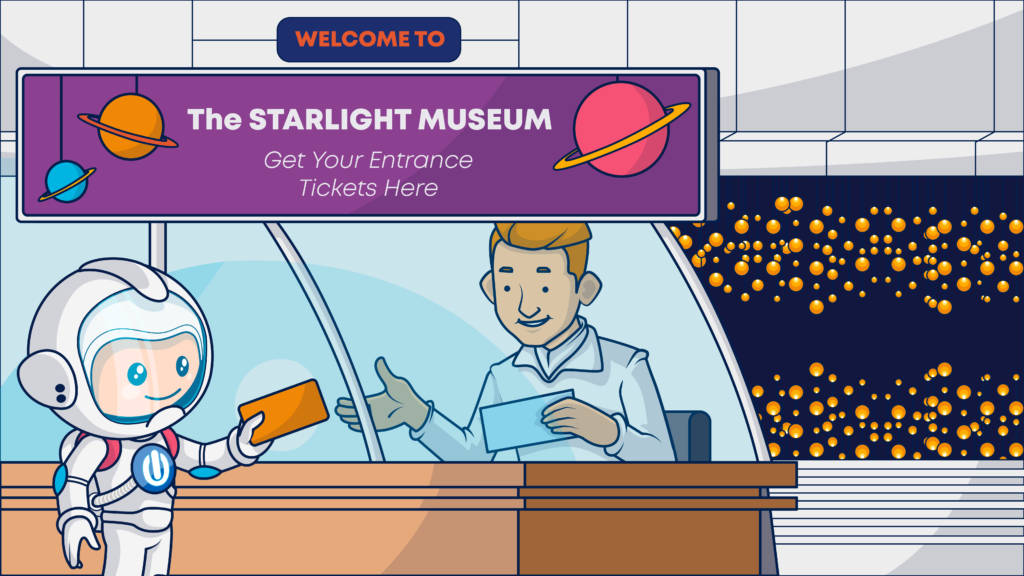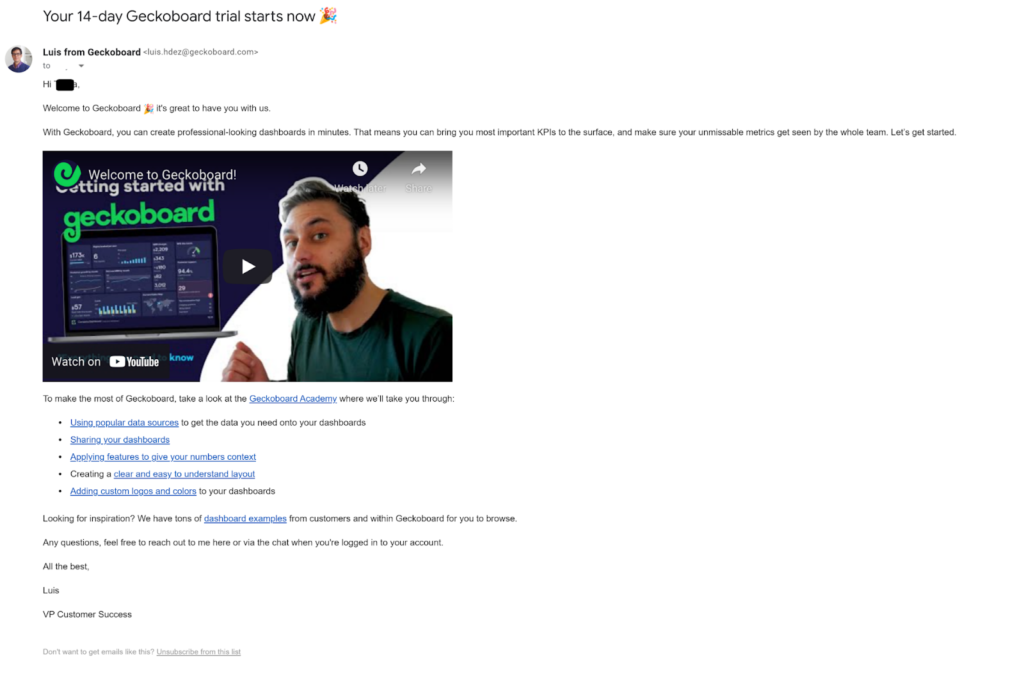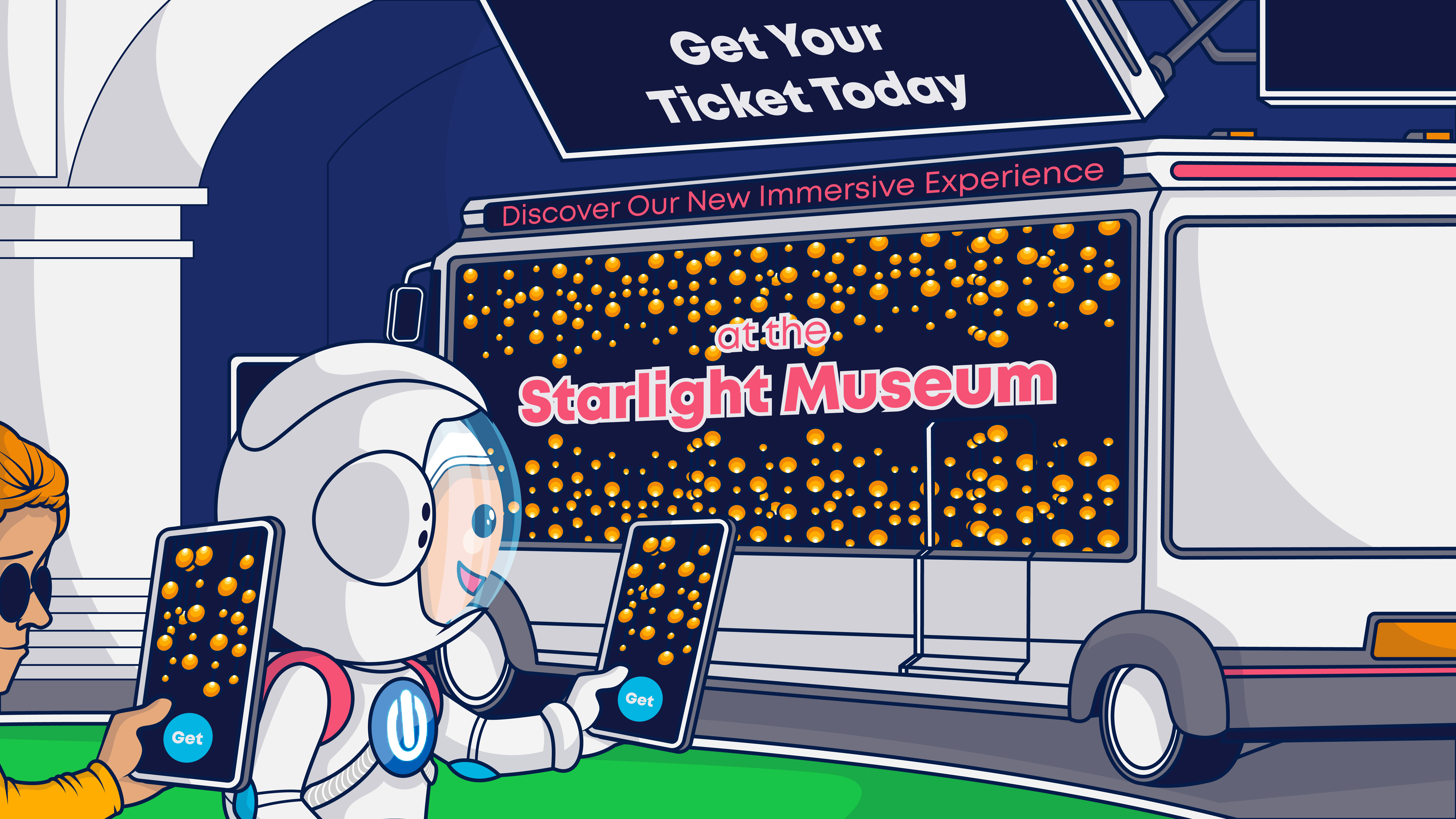Consumers are encountering and interacting with businesses across an increasing number of channels every year. Consumer expectations about how brands use those channels to serve them are on the rise, too. Cross-channel marketing strategies are how you’ll meet customers’ growing expectations. There’s no time to waste! Discover how to deliver unified customer experiences through cross-channel marketing now.
In 2016, in his introductory note for the first State of the Connected Consumer report, Salesforce’s then CMO, Simon Mulcahy, wrote.
“As customers’ connected boundaries expand, expectations are likely being elevated… It is no longer enough for customer experiences to be simple and fast. Increasingly, customers expect every touchpoint to be personalized and proactive,” adding, “In this hyperconnected state, customers continually judge each company’s interactions to find the smartest.”
More than six years later, consumers are still waiting to be wowed, and the stakes are high.
Today’s consumers are digital and data savvy. They understand the value of their data and expect something in return for sharing it with brands.
And they know that the data they share can be used to provide them with better, value-adding experiences because they’ve seen it happen.
Innovative new products and services offering personalization and customization features revealed the potential of powerful algorithms and machine learning to deliver extraordinary, individualized experiences.
IoT and apps aren’t the only places where consumers have been introduced to and learned to appreciate unified person-focused experiences either.
Through art installations, entertainment experiences, and brand activations (and sometimes all three blended together), consumers have gained an appreciation and a desire for more than just transnational relationships and media that talks at them.
And they’re spending money with companies that deliver what they want.
Message, medium and moment have never mattered more.
Cross-channel marketing is the path to developing the types of unified customer experiences that attract consumers to your brand and build valuable, long-lasting relationships with your customers.
Continue reading to learn
- What cross-channel marketing is.
- How cross-channel marketing benefits brands and consumers.
- A six-step process to implement cross-channel marketing in your organization.
What is cross-channel marketing?

Cross-channel marketing is a marketing approach that integrates consumer data and marketing tactics across different marketing channels to deliver cohesive marketing campaigns that unify the customers’ experience across channels, devices, and sessions.
Each channel’s messaging is complementary and its sending cadence is coordinated with the other campaign channels.
Cross-channel marketing campaigns are keyed to the specific attributes and behaviors of the viewer, as well. So an event or action that occurs through one marketing channel such as email or SMS may trigger an interaction from another channel.
This combination of cross-channel orchestration and individual personalization allows brands to deliver highly targeted, relevant, and timely messages to prospects and customers.
Cross-channel marketing isn’t the same as multi-channel or omnichannel marketing. In a hierarchy from least to most complex marketing approaches that use more than one channel, cross-channel marketing sits in the middle, between multi- and omnichannel marketing.
| Multi-channel marketing is the simplest approach to using more than one channel because that’s all it is: Marking through more than one channel. | Cross-channel marketing adds integration at the campaign and consumer levels, improving targeting. | Omnichannel marketing raises the bar on customization and integration by interconnecting channels and synchronizing their data in real time. |
How does cross-channel marketing differ from multi-channel marketing?
This level of customization is the key difference between multi-channel and cross-channel marketing.
Cross-channel campaigns optimize the consumer’s experience. Instead of delivering fragmented, repetitive, or irrelevant content, cross-channel marketing campaigns deliver contextual content to meet consumers where they are.
Even when coordinated, multi-channel campaigns are product- or brand-focused, and the message a particular customer receives may not be right-timed.
A cross-channel marketing campaign is centered around the customer and their experience. Message, medium, and moment all matter.
For example, a brand launching a multi-channel Super Bowl campaign featuring an in-game commercial might build up to the big day by sending an email announcing it’s landed a spot during the game and encouraging subscribers to watch.
Then, on game day, the business might activate a special landing page and post on social media with links to the page and a themed hashtag. The televised commercial would include the hashtag and link, too.
The messaging sequence of each element of this type of campaign is fixed and controlled by the marketer.
If the same brand developed a cross-channel campaign, it might begin with the simultaneous release of the hashtag and landing page link on social media and through a mass email campaign. Then, people who visited the landing page and registered would enter a separate flow from those who didn’t.
Registered visitors would receive a personalized welcome email with games or other engagement content related to the commercial event.
The social media ads for these participants wouldn’t invite them to visit the website and register but would encourage them to engage with new unlocked content or promote the brand’s products related to the game promotion.
Consumers who didn’t visit the landing page in response to the first series of messages would receive follow-up messaging via SMS marketing, email, or social media.
The brand would use preference centers, customer behavior, and other information to choose when and where to communicate with each person.
Cross-channel messages can be further personalized by adding merge tags to ads, emails, texts, and blogs.
What’s the difference between cross–channel and omnichannel marketing?
Cross-channel marketing enables brands to meet customers’ minimum viable requirements for personalization by serving them timely and relevant ads and other marketing collateral.
But what if you want to do more than the minimum to engage and delight your customers? To take your customized marketing at scale to the next level, you need omnichannel marketing.
What is omnichannel marketing?
Omnichannel marketing is cross-channel marketing with the integration features turned up to high. Omnichannel campaigns integrate data across all the brand’s marketing channels, enabling data to be exchanged between those channels in real time.
Like cross-channel, messages on one channel may be triggered by actions on another. But omnichannel takes things further, enabling interactions to occur on different channels simultaneously.
A consumer might scan a QR code while in a physical store and immediately receive a text with a coupon for that purchase. Then, when they complete their transaction, loyalty points for that purchase are automatically added to their account.
Full omnichannel marketing programs are more complex than cross-channel marketing programs and require powerful data management platforms like the ones we describe in our email marketing tech guide. These enable real-time exchanges between multiple advertising and marketing platforms.
Is cross-channel marketing a digital-only marketing method?

A business’s cross-channel marketing strategy should encompass as many of its distribution channels as possible. Both online and offline, digital and traditional marketing channels should be considered when preparing your brand’s campaigns and messaging.
However, cross-channel digital marketing will often take a leading role when businesses execute a cross-channel marketing strategy. Businesses can track in-person visits, in-store sales, and other non-digital exposures and interactions. But tracking online engagements is definitely easier.
Website cookies, integrated customer relationship management systems, and email marketing platforms facilitate gathering and exchanging customer data that makes cross-channel personalization possible.
As your cross-channel marketing program matures, look for ways to use digital technology to integrate your non-digital channel data.
For example, use mobile apps and QR codes to track in-store purchases and brand activation visitors to learn more about them and identify digital retargeting opportunities. Support traditional and alternative marketing campaigns by employing your digital channels to promote brand sponsorships, activations, and in-person, virtual, or hybrid (“phygital”) experiences.
Why should your business implement cross-channel marketing strategies?

Using limited channels and limited customization to reach, convert and retain your customer is growth-limiting.
Nearly every brand engages in multi-channel marketing in today’s marketplace. Some may use just one or two channels, such as a physical storefront and online ads or an ecommerce website supported by a social media lead generation funnel.
Businesses that use email automation to send personalized, event-triggered messages are already engaging in cross-channel marketing.
Is communicating through several channels and implementing automated emails enough, though? It’s a good start. The capability to deliver targeted messages to your audience is a core reason to implement cross-channel marketing.
But don’t stop there!
Consumers expect brands to deliver seamless customized experiences across platforms and channels. The benefits of building out your cross-channel capabilities make it a worthwhile investment.
What’s in it for you and your customers and why should you implement cross-channel marketing tactics that connect and coordinate your email and other marketing campaigns?
Four reasons to prioritize cross-channel marketing
🔃 First, progressing consumers through the buyer’s journey isn’t a single-channel (or even a few-channel) endeavor.
In today’s shopping ecosystem, consumers communicate with brands across multiple channels on their path to purchase. Google reported that during the 2021 holiday shopping season, more than half of all consumers used five or more channels to shop.
🔃 Second, consumers have more shopping choices and their process for choosing has become more sophisticated.
“Consumers no longer see online and offline shopping as distinct experiences–they expect everything to be connected all the time. Shopping must be fast and efficient some of the time, rich and experiential other times, and always easy and intuitive.” ~ IBM 2022 Consumer Study
Knowing your customers and being prepared to meet their needs is table stakes for modern retailers. Marketers must be ever-present, but not pushy, creating seamless experiences that add value and guide consumers to become customers and customers to remain loyal. These are the cornerstones of attraction marketing.
Brands must pay attention to their prospects’ and customers’ wants and needs at every touchpoint to deliver the exceptional customer experiences consumers expect. This attention to detail extends to ensuring that the marketing messages they send are contextual and relevant.
🔃 Third, consumers expect the data they share with brands to be used for their benefit at every interaction. Cross-channel coordination ensures that the data gained during one part of your customer’s journey benefits them throughout their journey.
Consumers want the convenience that a smooth flow of information delivers, whether they are engaging with a brand’s online and offline marketing or its non-marketing contact channels.
Delivering an excellent customer experience doesn’t end at conversion, either.
Messaging across departments, from sales to customer success, must reflect the same values and have access to the same customer data.
As you implement your cross-channel marketing strategy, you’ll un-silo data and make it accessible across departments to deliver value at every stage in your customers’ lifecycles.
🔃 Finally, cross-channel marketing helps you deliver unified experiences to each customer instead of static exposures and disjointed interactions.
What does that mean? Why do customers want unified experiences? Let me see if I can explain with an analogy from the art world.
When you go to an art museum or walk through a sculpture garden, you’ll see various works. Sometimes all the pieces are created by the same artists. Sometimes different artists’ works are included in a display.
A lot of times, the works are curated into a collection or displayed together in a room. You may even be offered a map with suggestions about what order to view the collection. To experience this type of art display, you step, stop, observe, and move to the next piece. Cool.
Then there are immersive art experiences.
Whoa!
Art experiences like these are arranged from start to finish to deliver something unique and memorable for every guest. The artists who create this type of art consider the entirety of the display from the viewer’s perspective.
As you move through an art installation (and usually they are so large that you literally move through them!), each component builds on and expands your understanding of the piece.
Experiences evoke emotions and create connections. This is true for art and commerce.
Brands that deliver better experiences can earn more loyalty from 87% of consumers, and 82% of shoppers will spend more for a better experience.
Your cross-channel marketing campaigns probably won’t trigger the same depth of emotion in viewers as a compelling, immersive art experience. But they should enable your brand to connect more deeply with your audience and develop longer-lasting customer relationships by:
Instilling trust through authenticity and consistency. Have you ever received a “Buy now!” email promotion only to visit the website to find that the promoted item is out of stock? Siloed teams and data can cause consumers to see inconsistent or conflicting offers, promises, or value statements from your brand on different channels.
Demonstrating attentiveness and responsiveness. Consumers want to be treated as humans, not numbers. Cross-channel campaigns that progress in response to your customers’ behaviors show your customers that your organization is paying attention to their wants, needs, and preferences.
Improving reach and engagement rates. Appealing to customers on the channels they prefer at the times they are most likely to be there increases your brand’s chances of being seen and generating a response from your audience.
Preventing your brand from over- or under-communicating. When each channel’s sending frequencies operate independently, and the data about your brand’s interactions with each contact are siloed, your messaging cadence may be off. You may fail to communicate at a critical touchpoint or over-communicate by sending messages from several channels at the same time. Integrating your touchpoint data gives you a complete view of how often you’re in touch with every customer.
Enhancing brand stickiness. Customers who receive relevant, contextual content are more loyal and make more frequent purchases than those who are bombarded with the wrong place, wrong time marketing communications.
A survey conducted by Nielsen on behalf of the contextual advertising company, Seedtag, analyzed consumers’ responses to ads placed alongside selected articles The ads were chosen based on currently used targeting strategies ranging from ‘not targeting’ to ‘contextual or niche targeting.’
The results showed that when brands communicate with consumers about topics that appeal specifically to their interests, they can generate 2.5 times more consumer interest and that ads presented contextually were more well-received than those that were not.
The report concludes that “contextually delivered advertising can prove to be more immersive to the article experience, as consumers seeing relevant, context-based ads are more likely to follow through with an interaction.”

This ad for the Astronaut Training Experience appeared in the recipient’s inbox after they visited the Kennedy Space Center website and viewed the experience landing page.
Enabling brands to develop progressively more complete customer profiles. High-value marketing messages that elicit responses from their audiences become a source of additional data about prospects and customers. When this customer data from multiple channels is combined in your CRM or other data repository, it creates a powerhouse of information for developing even better, higher-converting customer experiences.
Providing valuable data to fuel continuous improvement. Tightly coordinated campaigns and integrated data supplies cross-channel marketers with a wealth of performance data to feed their analytics tools to identify the best channels for each journey stage and customer segment and eliminate inefficient marketing tactics.
How can you get all this cross-channel marketing goodness for your organization? In the following sections, I’ll walk you through getting started step-by-step.
Implementing and expanding your cross-channel marketing strategy
Implementing a cross-channel marketing strategy is more complex than implementing a single-channel or multi-channel strategy. However, getting started is easier than you might think.
Your cross-channel marketing program will need four foundational elements to begin:
- Marketing channels
- Customer data
- Content strategy
- Analytics tools
Once you have these elements in place, you can begin executing a limited number of cross-channel campaigns while continuing to expand your resources and making data-driven improvements.
Here’s how to use what you have and get what you need to build a cross-channel marketing program that delights consumers and transforms them into high-value, loyal customers.
(I’ve listed these tasks as progressive steps. But you’ll often need to perform them concurrently. So pull up your favorite project management app to help you keep track of everything!)
Step 1: Build a customer journey map
Cross-channel marketing is your vehicle for executing a broader lifecycle marketing strategy.
In lifecycle marketing, your goal is to reach each customer with the messaging most likely to advance them on their journey at the moment that the message will have the greatest impact.
Because consumers use more than one channel to complete their journeys, your lifecycle marketing strategy must as well.
A customer journey map informs your lifecycle and cross-channel strategies by pinpointing which channels your prospects and customers are using at each stage in their buyer’s journey.
With this information, you can then determine where the channels under your control intersect with pivotal journey moments.
These are the channels that you can use to send timely, personalized messages that enhance your customers’ experience and demonstrate your brand’s value.
Step 2: Identify your ideal channel mix
As you map each of the touchpoints in your customer’s buyer journey, you should discover the channels through which consumers encounter or interact with your brand.
Not all of these channels will be under your control. You may not even discover some of the touchpoints and channels that influence your target audience. Although, the more you invest in learning about your customers, the more these hidden influences you can uncover.
Your ideal channel mix is a subset of all the different ways consumers learn about or engage with your brand.
- Which channels do you own? Examples of owned channels include your website and its blog, email and SMS marketing channels, native apps, chatbots, social media accounts, and physical stores.
- Which channels can you exert influence over? While you don’t own paid ad channels, you can control what those channels communicate about your brand. Plus, your organization may be able to increase or improve the sentiment of earned media, such as news articles and blog write-ups. social media mentions and forum discussions.
- Through which channels do you have the greatest ability to customize your marketing communications? This is the question that matters. For most brands, the easiest channels to customize are email and SMS. Platforms like Ongage are built to make the process simple using dynamic content and data integrations.
These aren’t the only channels you can customize, though.
Once you have a robust system that includes data management, identity resolution, and integrations, you can customize the messages that appear through other channels, particularly across your other owned channels.
For example, you can modify portions of your blog to address a specific reader’s journey stage or insert a flyer with personalized recommendations into your DTC shipping packages. Less complex tactics include displaying different pop-ups or landing page content to visitors based on the data in their profile.
- Which channels generate the greatest value for your brand? RIO is an important factor to consider when assessing value. But don’t overlook other value factors.
Use your historical data and performance analytics and reports to identify which channels deliver customers that make large purchases, are the most loyal or have the longest relationships with your brand, your high lifetime value customer, and those who actively promote your brand or take part in your referral programs.
In other words, take a holistic view of value and how you value your customers.
💡Use technology to connect consumers in-person and online and collect data about their devices and preferences
Think long-term and outside the box when contemplating the channels for your cross-channel marketing program. Identify which channels you can start using now and the ones that have future potential. Cross-channel marketing is a long-term approach to growth.
If you can predict tomorrow’s best channels, you can begin laying the data and infrastructure to support cross-channel marketing for those channels now.
Pay particular attention to channels and technologies that bridge the gap between online and offline experiences, such as product packaging, QR codes, badge scanning, hybrid activations, augmented reality, and smart devices. Where there’s a digital connection, there’s a way for you to personalize your customers’ experience.
For example, partner with your packaging and distribution provider to add customized URLs or QR codes to each customer’s shipment that leads them to a personalized message.
Use badge scanners or self-service kiosks to collect emails and preference data from visitors who attend in-person events and brand activations and use this information to send follow-up content that continues the conversation and their brand experience.
Create transactional email workflows to deliver digital receipts and other details to in-store purchasers and request feedback through automated post-purchase campaigns.
Does creating campaigns that extend across multiple channels to deliver hyper-relevant content sound amazing? Or outlandish?
Netflix, Spotify, Alexa, and other devices and apps that depend on surprising and delighting their customers are delivering this level of customization.
Leading marketers aren’t far behind.
Deloitte reports that among CMOs from high-growth companies, 51% are delivering personalized content via dynamic creative optimization, and 49% are using data to serve ads to users via programmatic media.
Customization has become the standard for customer service. Brands that want to do it right will need data.
Step 3: Get your data house in order
Executing cross-channel campaigns requires information. You have to know about your customers’ and contacts’ interests, tastes, and preferences to create relevant content.
To know where and when to send that content, you have to know where your customers or contacts are in their buyer’s journey.
Which touchpoints have they passed? What is their level of purchase intent? Have they lost interest or fallen out of your sales funnel?
If your data streams are siloed, your campaigns will be as well.
A lack of data integration is one obstacle that prevents many organizations from making the leap from multi-channel to cross-channel.
Fortunately, there are data management solutions that can integrate the data produced by the various marketing and communications platforms brands use to reach their customers.
For example, Ongage uses API integration to connect our platform and your brand’s customer relationship management (CRM) software, customer data platforms (CDP), or other data management systems and enable the exchange of information.
Choose a data management tool that is powerful enough to handle multiple sources of input and process the volume of data those sources generate. Then, prepare to manage your data efficiently and effectively by standardizing your fields and input rules when possible.
This means defining your data nomenclature and sticking with it when creating assets such as sign-up forms or checkout pages or planning to convert non-conforming data before you can use it.
For example, if your email sign-up form has a single field for users to enter their name, some subscribers may enter their full name, and others just their first name. If your CDP has separate first and last name fields, you’ll have to create rules for determining which field your form’s single entry will fill.
Simple differences, such as the formatting for dates and phone numbers, can also add friction to your data processing flow. Planning in advance can save you headaches later.
Another step you can take to avoid future problems is to cleanse your data to remove duplicate and corrupt data from your data sets.
Your data management platform may include data cleansing and normalization features or you can use standalone tools to prep your data for integration.
Of course, you won’t be able to standardize every input in advance because some of it will come from third-party sources.
How do data management systems handle the differences in nomenclature and schema between sources?
Data integration tools use an ETL (extract, transform, load) processes to unify multi-source information.
This process enables it to accept information in various formats, then normalize or transform the data to fit the data repository’s schema before loading the data into the repository database. Reverse ETL performs a similar task, converting data from your central source into the receiving system’s schema.
According to ecommerce data platform, Integrate.io, most CDPs use event-driven APIs that send new information to your central source when a defined event occurs, such as when a customer makes a purchase, visits a specific product page, or completes a sign-up form. The return (reverse ETL) data may be delivered in batches and thus not available in real-time.
The ability to gather and redistribute real-time data is the best way to ensure timely communications. However, it also requires a powerful data management platform to accomplish this level of data integration.
Until you can go fully omnichannel, focus on systems that deliver the data you need to execute event-triggered marketing automations that reach consumers at the moment.
Make a note of how often batch updates take place for your various marketing channels and tools and plan your campaign strategies with these limitations in mind.
Figuring out how to store and distribute your data is just part of the cross-channel data puzzle. You also need to collect data to inform your strategy and trigger your campaigns.
Step 4: Gather actionable data about your audience
It’s hard to even think about using consumer data without confronting the issue of data deprecation.
Increased regulatory scrutiny, consumer privacy and safety concerns, and partnering platforms’ reluctance to share have made customer data management a lot more complicated than it used to be.
As a starting point, make sure you have systems in place to secure and protect the data you collect about your customers and comply with the many regulations regarding consumers’ data control and privacy rights.
Review the EU’s General Data Protection Regulation (GDPR), Canada’s Anti-Spam Law (CASL), the US CAN-SPAM Act, and California’s Consumer Privacy Act (CCPA) and work with partners and platform providers whose practices are compliant.
Next, develop a strategy to learn about your customers and their activities that doesn’t rely on third-party sources or third-party cookies.
Increased restrictions on data-selling or sharing, the phasing out of third-party cookies and the increasingly high walls around walled garden publishing platforms is making it harder to obtain useful third-party data.
Of course, brands and advertising platforms are still going to need to exchange critical performance information. But that information is likely to be more aggregated and anonymous, making it less useful for creating the kind of personalization consumers want.
| How much data is trapped inside walled gardens? In a recent report, Gartner notes that Google, Facebook and Amazon combined collect two-thirds of all U.S. digital ad revenue. “The report adds, that “[a]although marketers can leverage these platforms’ advanced targeting features to fun highly-sophisticated ad campaigns, they can only get an aggregated view of campaign performance as walled gardens preserve the integrity of their users’ privacy…data that resides within these walls stays there.” |
As data becomes more valuable, businesses that don’t build proprietary 360-degree profiles of their customers may be left out in the cold.
Collect zero-and first-party data to develop comprehensive customer profiles to build better cross-channel campaigns
The best information to inform your cross-channel marketing campaigns comes from the source (your customers and prospective customers) and is owned by your brand.
How do you get that kind of data?
Obtain your straight-from-the-source information by asking your customers. Use your preference center, sign-up forms, and other methods to seek direct input from individuals. With a few exceptions, you can rely on this type of information, called zero-party data, to be accurate because the person who knows best shared it with you.
Be aware, though, zero-party data can let you down sometimes.
If you use forms that require too much time or effort to complete accurately or your customers want the incentive you offer more than they care about providing correct data, they may provide you with fake information.
(That’s one reason we recommend validating the email addresses of new subscribers before you add them to your subscription lists.)
How can you gather actionable data without frustrating your customers?
Get people to tell you about themselves using tactics other than filling out boring forms and asking questions other than their name, address, and phone number.
For example, send your customers an email poll that invites them to vote for their favorite candy flavor or gemstone color and add each person’s selection to their profile.
Provide value-adding tools and calculators on your site and offer to send personalized results to users who create a profile on your site or share their email addresses.
This latter strategy can also help you identify your visitors, which is important when you are trying to collect first-party data.
Brands collect first-party data from the subject of that data (the prospect or customer), but the method of collection is slightly less direct than it is for zero-party data. First-party data is information you get by observing the person’s actions (or inactions) on your owned channels.
How your customers engage with your website, respond to your emails, or interact with you via social media can provide insights into their likes and dislikes, when they are most likely to be online, and signal whether they are ready to make a purchase or thinking about leaving your brand.
As I mentioned, there’s a catch with first-party data, though.
Before you can assign data to a profile, you have to identify its source. Observations about what people do on your website is useful even if you can’t assign it to an individual. But it won’t help you customize a person’s experience.
The process of identifying a visitor to your website or other channel is called identity resolution.
Using deterministic vs probabilistic data for identity resolution
Individual brands, publishers and third-party partners sometimes use a combination of methods to identify the people visiting their digital properties and to connect data from offline sources as well. The information businesses use to make these connections may be deterministic or probabilistic.
When a person tells you who they are using a unique identifier such as their name or phone number, it’s called a deterministic identification or one that is known to be true and accurate.
You can also make deterministic identifications by linking three or more authenticated data points together.
Remember Algebra class? If A = B, and B = C, then A = C, right?
The same formula works for your customer’s data. If email A = phone number B, and phone number = customer C, then email A belongs to customer C.
By connecting these data dots, you may be able to positively identify a visitor to your website by linking data you gained during one visit with their existing profile data.
If you don’t have enough facts to make a conclusive identification, then you can use probabilistic data to deduce a person’s identity. (That’s “probabilistic” as in “it’s probably them.”)
This type of identification isn’t certain, it merely represents your best guess. Examples of probabilistic data include a user’s IP address, device, time of day and geolocation. The more data points you collect, the more likely it is that your identification is correct.
Currently, many websites use first-party or third-party cookies to identify their visitors.
The use of cookies enables brands to distinguish between first-time or unknown visitors and prospects or customers who have visited the website before. Alternatively, websites can identify visitors by asking them to log in or otherwise indicate who they are when they arrive.
Finally, whether individuals interact on your website, via email, or on a third-party platform, pixels can help you identify and track their next moves. It’s then up to you to develop dynamic content to deliver at subsequent interactions.
Once a visitor is identified with certainty, the website can connect that visitor’s behaviors to their central profile.
However, both of these methods of identification have weaknesses.
Visitors who decline all cookies or clear their cookies from their browsers can’t be identified and tracked. Also, cookies are device and browser-specific, not person-specific. So, you may be able to make a household identification using cookies, but you can’t guarantee that you’re interacting with the same person each time.
Websites that don’t employ cookies for identification and rely on self-identification can only track visitors who choose to log in. This limits your brand’s opportunity to track your visitors’ behaviors and gather data. However, it is in keeping with the recent move toward consensual use of data and permission-based marketing.
💡 Industry experts note that customer data management is rapidly merging with consent data management with new platforms that put consumers in control of what information brands can collect and retain about them.
What else can you do to identify website visitors?
In response to changes in the way devices and browsers are treating identification issues (and all that walled-garden stuff), marketers are looking for new solutions to solve the identity resolution riddle. One potential option is the use of a persistent unique identifier.
Identity resolution platforms are developing ways for consumers to choose to use a specific identifier across devices and platforms that enables brands to track their behaviors, link them to an addressable profile, and personalize their experiences.
Strategically, individual brands must develop methods to gain their customers’ and prospects’ consent to collect and use their data.
Transparent collection methods, incentives to share, and personalized journey orchestration that delivers extraordinary customer experiences are key to earning consumers’ consent.
Step 5: Strategize your campaigns
After you’ve gathered information about your journey touchpoints, communication channels, and contacts, you’re ready to use that information to execute high-performance cross-channel campaigns.
Your first task at this stage is to define your business and marketing objectives and ensure that these two objective sets are aligned.
In most instances, your marketing objectives should be distributed across your customer lifecycle, including lead generation, revenue enhancement, and retention efforts. However, there may be circumstances where you need to focus on one section of your customer lifecycle to restore a healthy balance.
Once you’ve defined your business and marketing objectives, your next task is to decide which campaigns to develop first. There are several frameworks you can use to evaluate your options and prioritize them, such as the Impact-Effort matrix, the RICE method, or the MoScoW analysis. In general, these frameworks will guide you through the process of weighing the relative costs and benefits of each of your choices.
Among the campaigns you should prioritize are those that are “must-haves,” and those that you are most confident will generate returns.
For example, consumers who sign up for your email subscription list expect to be welcomed via a series of onboarding emails. These sorts of automated email sequences tend to have higher engagement rates than other campaigns. So, implementing a cross-channel campaign that customizes the content and timing of your welcome messages should be a top priority.

Triple-play: Geckoboard kicks off a welcome and onboarding series with a personalized email message that also directs recipients to select content on its website and the analytics dashboard platform’s YouTube channel.
If your organization is experiencing high churn levels, on the other hand, you might decide to prioritize campaigns aimed at gaining customer feedback and re-engaging at-risk customers.
The behavioral data in your customers’ profiles can help you segment your list to target recovery and feedback campaigns.
Then, you can create cross-channel programs that focus on demonstrating your interest and appreciation for these at-risk customers.

The subscriber’s inaction triggered this re-engagement email from Wild Birds Unlimited. They hadn’t visited the store’s website or made a purchase for several weeks. The email combines a statement of appreciation plus a 20% off coupon to rekindle the relationship.
Next, you’ll need to decide what channels you will use for the campaigns you prioritize.
Sending a welcome email to an email subscriber is a pretty obvious choice. But will the email be the end of that particular campaign journey? Should you add a link to a personalized landing page to your welcome email?
How will you offer similar personalized experiences to customers who don’t sign up to receive marketing emails? How will you orchestrate the journey of subscribers who have signed up to receive both email and SMS marketing messages?
For a customer appreciation campaign, you might pair a personalized email with an exclusive landing page offering loyalty points or requesting feedback. Then, use retargeting ads that feature social proof such as user-generated content or testimonials to restore your customers’ sense of belongingness and confidence in your brand.
In addition to channel and campaign type, managing the volume and cadence of your messages across a specific customer’s chosen channels is critical to ensuring seamless experiences. Once a customer has redeemed a welcome discount received via SMS, your cross-channel flow should ensure that they don’t receive the same (now invalid) code via email. Instead, these subscribers can be shifted to an onboarding series that invites them to learn more about your brand and brand community.
Mapping interconnected flows between your channels may take some time and testing to get right. But don’t be discouraged. Start with what you know and build upon what you learn.
Use your email marketing platform’s scheduling and automation tools to develop flows with branching logic that combine triggers from your website with email (and SMS messaging for your text subscribers) to build a personalized, unified experience for your subscribers.
Step 6: Monitor and analyze your cross-channel campaign performance
Cross-channel marketing is a data-powered process from end to end.
Use historical performance and industry data to select the strategies and tactics to pursue. Then, deploy your customer data to inform the timing and content of your campaigns. Finally, examine your performance data to identify what worked and what didn’t and make continual improvements.
As you develop campaign content, employ A/B testing or multivariate testing to help you decide when to send messages and how often, and even what channel mix to use.
I’ve covered a lot of territory in this article and I know some of it was a little dry. So let me leave you with this parting gift: A quick guide that brings it all together.
Cross-channel marketing success checklist: 21 tips to maximize your marketing performance with cross-channel marketing campaigns

- Align your marketing plan with your business objectives.
- Conduct a situational analysis before launching new campaigns. Identify your resources and strategic challenges.
- Upgrade your tech stack to facilitate data integration, automation and real-time visibility across channels and departments.
- Build your marketing strategy around your customer lifecycles.
- Use multiple data sources, including historical data, industry trends and zero- and first-party data to find out which channels your customers prefer and when you’ll find them there.
- Employ segmentation plus personalization to develop hyper-targeted messaging.
- Play to the strengths of each channel in your mix. Don’t try to accomplish all your objectives through a single channel.
- Pay attention to your aggregate marketing communications load. Consumers count every contact regardless of channel.
- Facilitate two-way communications with your customers by integrating two-way channels into your marketing and contact mixes.
- Use gamification and interactive elements to keep customers engaged and gain additional data about them.
- Incentivize your visitors to authenticate their identity with your properties across devices.
- Implement unified cart technology to streamline cross-device shopping journeys.
- Use technology such as QR codes, ULRs and hashtags in physical catalogs, print and television ads to connect non-digital and offline marketing campaigns to online resources.
- Limit your use of bulk campaigns to prevent consumer fatigue. Focus on delivering quality over quantity.
- Use your journey maps to identify key events to trigger automated campaigns.
- Give your customers and prospects control over their data with preference centers and other consent management solutions.
- Keep your messaging themes consistent and on-brand across channels and across campaigns.
- Add deep links to marketing collateral that takes viewers directly to the target destination seamlessly.
- Get creative with your use of dynamic content. Add dynamic content blocks and fields to blogs or landing pages to customize the content each segment or individual consumer sees.
- Test, assess and reiterate to continually improve and respond to changing consumer preferences and expectations.
- Start preparing now for next-level, omnichannel communications.
Cross-channel marketing opens up multiple opportunities to meet your subscribers and customers where they are. When opting for this strategy, be sure you can track and attribute every interaction in the customer’s journey. When in doubt, consult our multi-touch attribution guide for help.
Additionally, you can capitalize on this unique marketing opportunity by testing different communication formats such as virtual reality and video marketing. Can you use email for video marketing? Yes! Discover how in our complete video email marketing guide.














